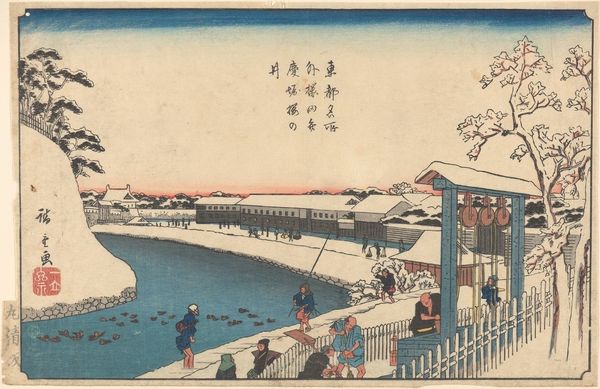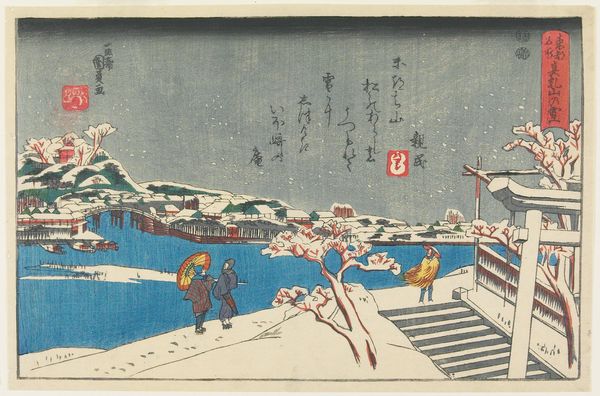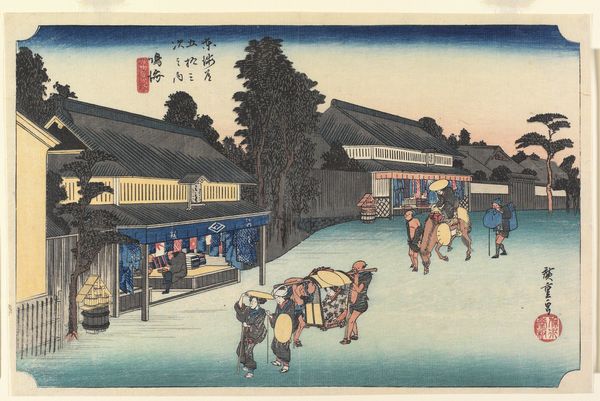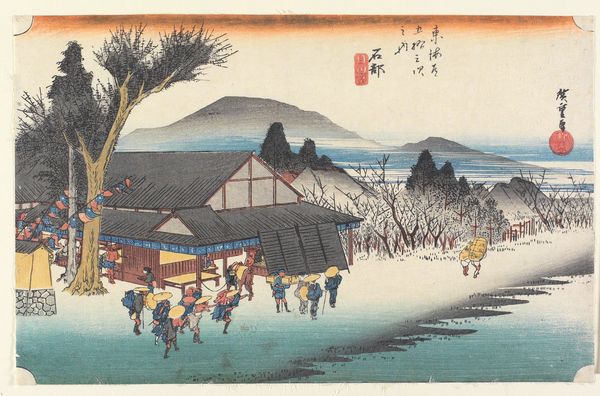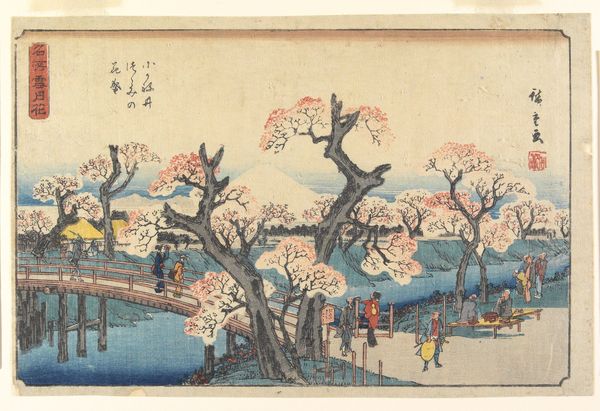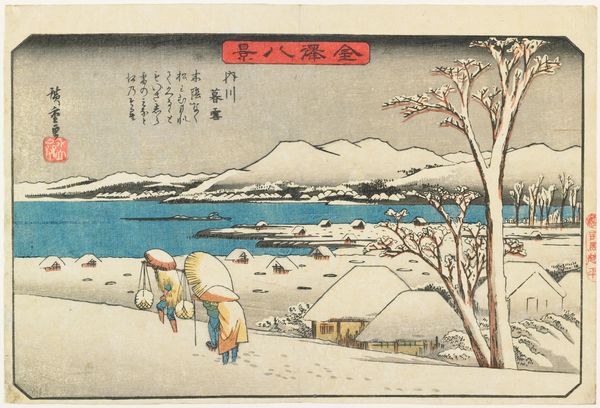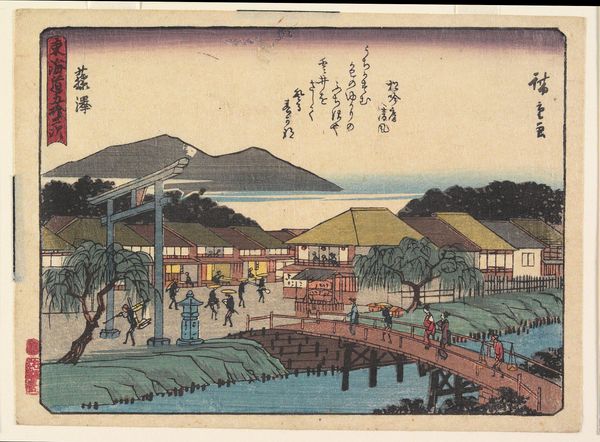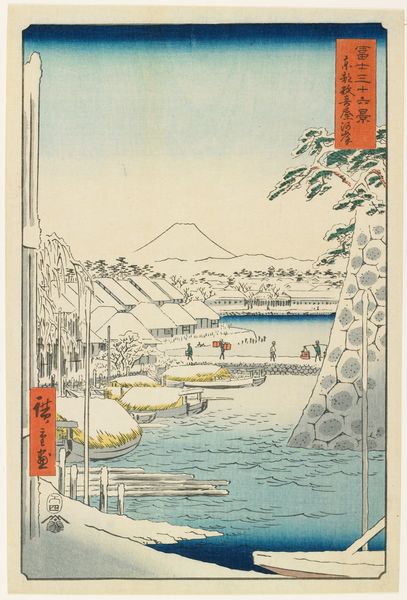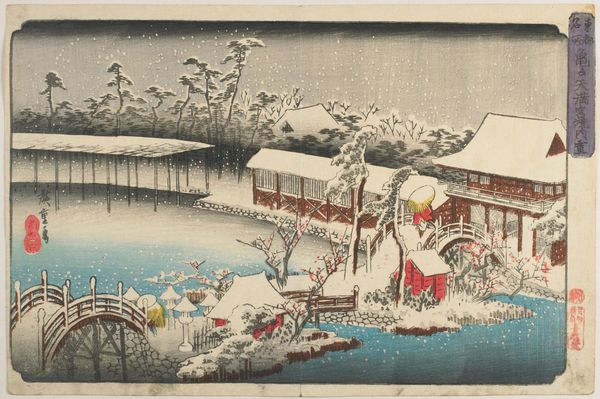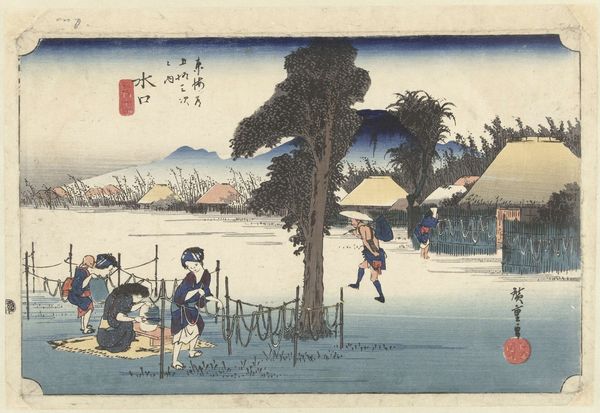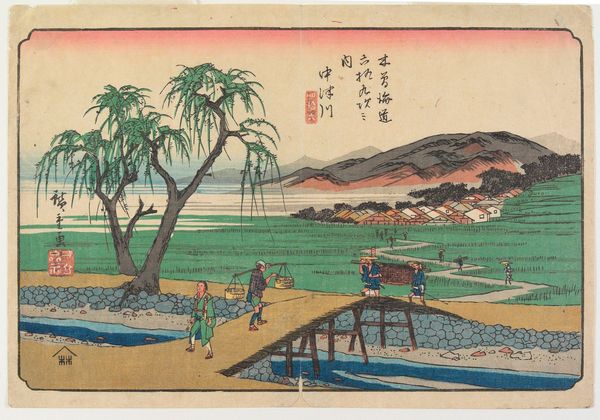
Cherry-tree Well at Benkei Moat outside Sakurada c. 1844 - 1845
0:00
0:00
print, ink, woodblock-print
# print
#
landscape
#
winter
#
ukiyo-e
#
ink
#
woodblock-print
#
cityscape
Dimensions: 8 13/16 × 13 3/4 in. (22.4 × 34.9 cm) (image, horizontal ōban)
Copyright: Public Domain
Editor: We’re looking at "Cherry-tree Well at Benkei Moat outside Sakurada," a woodblock print made with ink around 1844-1845 by Utagawa Hiroshige. There's such a peaceful feeling despite the chilly winter setting. All that snow… It seems like life is continuing uninterrupted by the weather. What catches your eye most in this print? Curator: I'm struck by the composition and how it subtly guides our eye. Consider how the artist has positioned the well and the figures, their presence, even small, reminding us of enduring human rituals amidst the changing seasons. Do you notice how the reddish glow of the horizon creates a contrast with the blue and white? Editor: Yes, it’s beautiful! Almost hopeful? Curator: Indeed. This juxtaposition—the cold, hard reality of winter against the promise of a new dawn—it is powerful. Consider the bells hanging in the well structure: bells have been important as a symbolic link across various religious contexts. What emotions or associations do bells trigger for you? Editor: Well, on a basic level, an announcement! An aural signal. The passage of time? Curator: Precisely! And think of the historical context. Ukiyo-e prints weren't just pretty pictures; they captured everyday life. The bells here would resonate with the daily rhythms and the spiritual lives of people in Edo, now Tokyo. This seemingly simple scene speaks volumes about cultural memory and continuity, how people maintain routines in the face of weather, governance, and all types of external conditions. Editor: That makes me see this in a new light. It's not just a pretty picture, but a coded record of daily life and spiritual symbolism. Curator: Absolutely! It holds memories embedded within visual symbols, accessible across time. It is what makes art timeless and endlessly rewarding to study.
